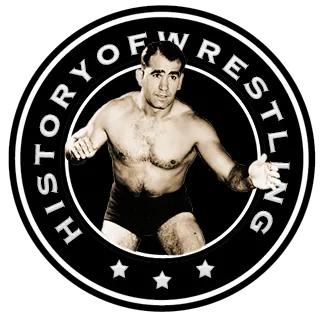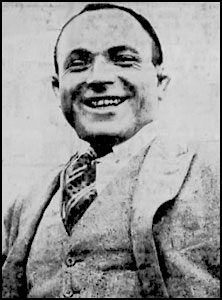by Stephen Von Slagle
50th State Big Time Wrestling/Mid-Pacific Promotions (a.k.a. “Hawaii”)
OWNERS/PROMOTERS:
Al Karasick (1936-1961)
Ed Francis (1961-1979)
Steve Rickard (1979-1980)
Peter Maivia (1980-1982)
Lia Maivia (1982-1988)
STATES & PRIMARY CITIES:
Hawaii (Honolulu, Hilo, Kahului, Lanai City, Kaunakakai, Kapaʻa, Puʻuwai, Kapaʻa, Waipahu, Pearl City)
MAJOR CHAMPIONSHIPS:
Hawaii Heavyweight title (1937-1979)
Hawaii Tag Team title (1952-1979)
United States Heavyweight title (1962-1968)
North American Heavyweight title (1968-1978)
Pacific International Heavyweight title (1978-1979)
Polynesian Pacific Heavyweight title (1980-1988)
Polynesian Pacific Tag Team title (1980-1988)
PROMOTIONAL HISTORY:
Although the Hawaii Heavyweight title was created in 1917, making it one of the sports’ earliest championships, the story of professional wrestling in Hawaii really begins with Al Karasick, who opened his Mid-Pacific Promotions in 1936. Assisted initially by his talented booker, Bobby Bruns, Karasick held weekly live events at the Honolulu Civic Auditorium and pro wrestling quickly became a very popular form of entertainment in Hawaii. By offering his audience a quality product that featured some of the sport’s biggest names, who were obviously more than happy to spend time wrestling on the islands, Karasick’s business prospered. A member of the National Wrestling Alliance beginning in 1949, Al Karasick promoted professional wrestling there for more than 25 successful years before retiring in 1961 and selling his territorial rights to former wrestler Ed Francis.
Upon acquiring a television outlet at KHVH Channel 4, Ed Francis (whose son Russ Francis later enjoyed 13 successful years in the N.F.L. playing for both the New England Patriots and the San Francisco 49ers) featured Lord James Blears, who had been a popular wrestler on the islands for many years, as his color commentator. Hosted by Blears and Francis, 50th State Wrestling was an instant hit with viewers and eventually became the highest-rated program in Hawaii during the promotion’s best years. Ed Francis’ Big Time Wrestling truly prospered during the mid 1960s through the early 1970s, with a core roster that included mainstays such as Curtis Iaukea, Luther Lindsay, Neff Maiava, Johnny Barend, The Missing Link (Pampero Firpo), Peter Maivia, Jim Hady, Ripper Collins, Moondog Mayne, Sweet Daddy Siki, Sam Steamboat, and many other talented performers. Of, course, Francis’ roster was further enhanced by the frequent appearances of top-level “mainland” performers like Lou Thesz, Fred Blassie, Nick Bockwinkel, “Superstar” Billy Graham, Gene Kiniski, the Funk brothers, Billy Robinson, Ray Stevens, Bobo Brazil, Verne Gagne, Pedro Morales, Pat Patterson and countless others. With a highly-rated television show that featured some of the best wrestlers in the world engaging in exciting, physical matches, Francis was able to draw capacity crowds to his events at the Civic Coliseum (and, later, the Honolulu International Center) for years. Furthermore, Francis’ popular television program introduced many facets of wrestling that are now commonplace but were highly unique at the time, including the “locker room interview” as well as character profiles and vignettes that contributed greatly to both the character development of his wrestlers and the entertainment of his viewers.
As is always the case with professional wrestling, periods of extreme popularity are invariably followed by periods of decline and by the Spring of 1979, Francis had made the decision to sell his territory and retire following nearly twenty years as a wrestling promoter. New Zealand’s Steve Rickard, who also had years of experience promoting on an island, purchased the territory and began promoting weekly cards at Bloch Arena and monthly events at the Blaisdell Arena. Rickard maintained the previous group’s TV contract with KGMB and, smartly, the highly popular announcer Lord James Blears. With a talented roster that included Rocky Johnson, Ripper Collins, Don Muraco, The Samoans, Rick Martel and others, Rickard’s promotion did well, however, less than a year after purchasing 50th State Wrestling, Rickard sold the promotion to Peter Maivia, who renamed it Polynesian Pro Wrestling. Unfortunately, the Samoan High Chief was only able to run his P.P.W. group for a short time, as he was diagnosed with cancer and passed away on June 12, 1982.
Following Maivia’s death, his wife Lia Maivia took over the business and became the NWA’s only female promoter. Under her leadership, Polynesian Pro Wrestling overcame opposition groups that aimed to exploit the vacuum created by Maivia’s death and P.P.W. remained the premier wrestling promotion in Hawaii. P.P.W.’s continuing status as Hawaii’s pro wrestling source and Lia Maivia’s capabilities as the company’s leader were clearly proven by the success of her “A Hot Summer Night” card that took place on August 3, 1985 and drew more 20,000 fans, a record audience for Hawaii. However, that success was, ultimately, short-lived. Mrs. Maivia was hampered by the same two issues that affected her promotional predecessors, namely, the limited number of major cities in Hawaii that could be promoted profitably and the high cost of flying in top names from the mainland. Without a steady stream of big name stars coming to the islands, attendance invariably dipped and with the WWF, J.C.P., the AWA, UWF and World Class all vying for the best talent during a highly competitive era, the Hawaiian promotion suffered. That issue, while troublesome yet manageable, was severely compounded by an expensive lawsuit brought about by one of P.P.W.’s “outlaw” competitors. Although the lengthy court case eventually went in favor of Maivia when she and her co-defendants were acquitted in 1989, the damage to Hawaii’s top promotion had already been done and NWA Polynesian Pro Wrestling was forced to cease operations in 1988.



